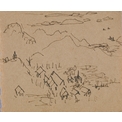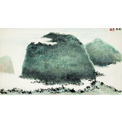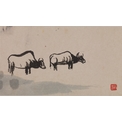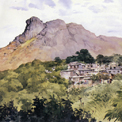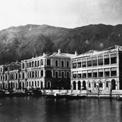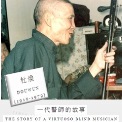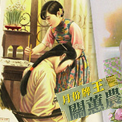 Collections
Collections A Eulogy of Hong Kong Landscape in Painting: The Art of Huang Bore
A Eulogy of Hong Kong Landscape in Painting: The Art of Huang Bore Plates and Sectional Texts
Plates and Sectional Texts Lantau Peak.Mui Wo and Tai O
Lantau Peak.Mui Wo and Tai O
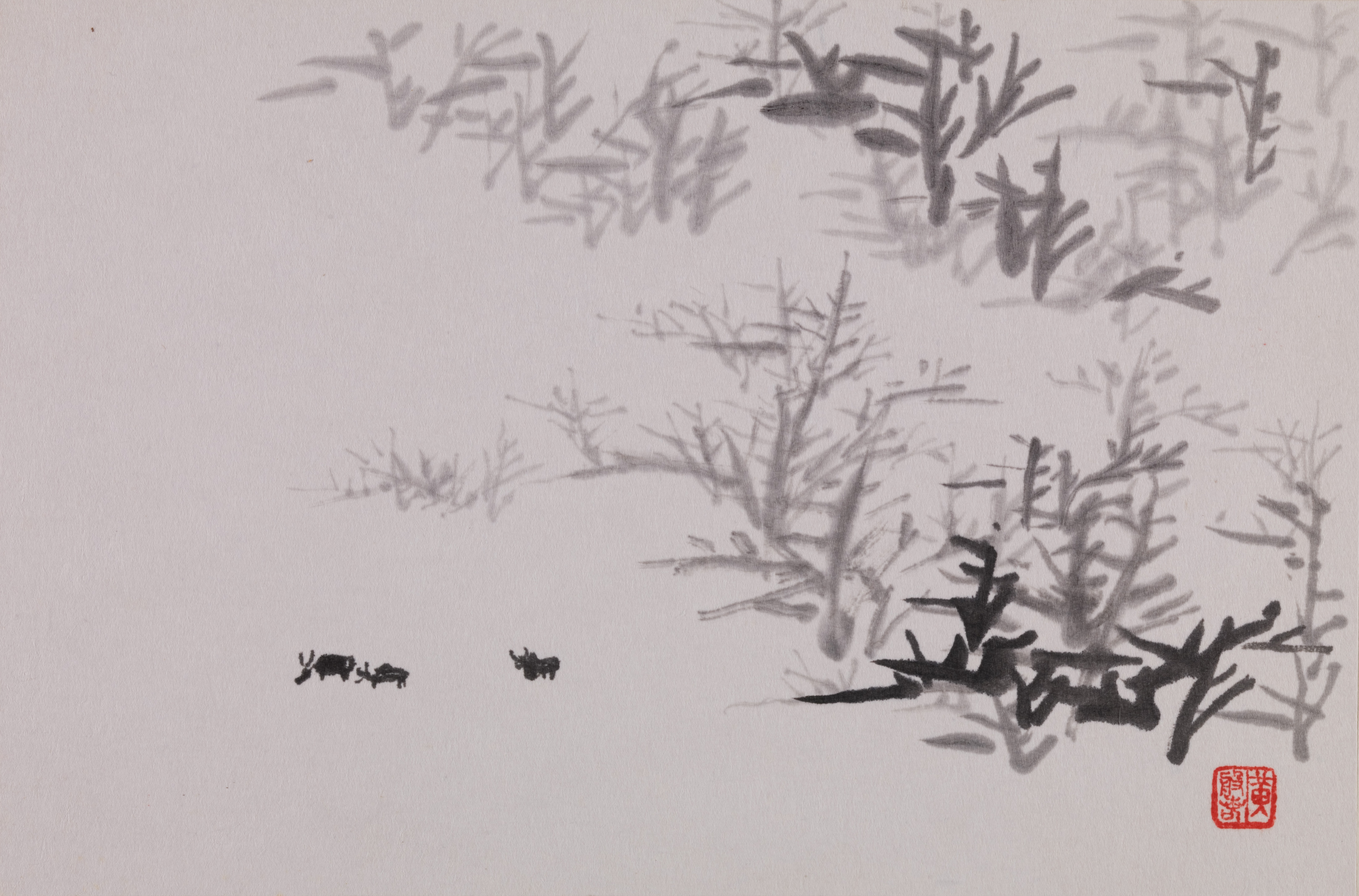
Fascinated by the topography and history of Lantau, Huang Bore did quite some paintings of the island’s scenic spots like the Lantau Peak, Tai Fung Au, Mui Wo and Tai O. In these paintings, lofty mountains sloping into the sea are a recurrent sight and the islands on the horizon look as if they were the paradise islands described in Chinese myths to contrast with the terraced fields ploughed by oxen on land to remind us of our not too distant past.
The Lantau Peak, the highest point on the Island, is an ideal spot for admiring the spectacle of a sunrise. The journey and the climb, however, took more than a one-day trip to do, given the inaccessibility in the old days. This was finally made possible in 1952 when the Yung Sheh Hiking Club, a local hikers club, secured the consent of the abbot of the Po Lin Monastery to take in the hikers for the night so that they could set off for the peak in the small hours. Huang Bore joined his fellow members of the club on several occasions and found the climb so memorable that he visualized his impressions on many paintings, Lantau Peak being one of the more celebrated. In another painting entitled Climbing the Lantau Peak at Night, which is created from the sketch Lantau Peak, the hill appears to be all the more monumental when seen from a low vantage point. More stylized interpretations are found in Ngong Ping, Lantau Island and Album of Hong Kong Sketches (Ngong Ping). The former is a panoramic view of Ngong Ping, the Po Lin Monastery and Kau Nga Ling overlooked by the Lantau Peak in a layered ethereal landscape while the latter has the Lantau Peak as the main mountain although the twin peaks are reduced to two humps with a pagoda in the foreground.
Mui Wo and Tai O are two scenic spots found in the east and west of the Lantau Island. In the old days, Mui Wo was carpeted by paddy fields worked by oxen. If one heads southwards from Mui Wo along the coastline through Pui O, Cheung Sha and Shek Pik, and then climb up to Keung Shan, one will reach Ngong Ping via Tai Fung Au. Furthest west from this point is Tai O, a fishing village and salt producing area dating from the Song dynasty. Even to this day, vestiges can still be found in the fishing boats moored along the shore, the stilted houses, the water channels and disused salt pans. Other attractions include the Boundary Stone, Po Chu Tam and the Yeung Hau Temple.
